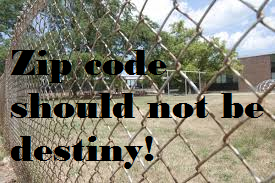“The Internet is just a world passing around notes in a classroom.”
~ Jon Stewart via bob@lakesideadvisors.com
My Facebook is jammed full of notes, too many to read. It’s replete with recipes. I know many disgruntled teachers, but almost none of them are telling their stories in social media. Districts are known to spy on social media accounts. So I go in to find the latest ways to make banana bread and … let me check. I found some sort of green vegetable smoothie, lemon bundt cake and peanut butter cheesecake bars, not to mention a great many dogs who need forever homes. I am told that in case of a blackout, a crayon will burn 30 minutes. Sex on Malibu Beach calls for a red, sugar-rimmed glass and making homemade ginger ale looks like fun.
I’m not sure about the looks of this former coworker’s soup, but I bet it tastes great:

Oops. Getting distracted here. Let me wander back toward my actual topic.
I always happy to seize a real, paper note nowadays. I like the idea that students are writing to each other even if I have to deprive them of scraps of paper with somebody’s latest romantic adventures. Sometimes I correct the note’s spelling and grammar if the contents are not too personal. (That discourages notes!)
I’ve raised a flag in my PARCC posts, though, that I want to keep in the picture. The other bilingual teacher and I are the only 7th grade teachers in my school with easy access to laptops on a regular basis. The Bilingual Director used bilingual funds to ensure that her teachers had Chromebooks before the rest of the school. Other classes still fight for access. They share, negotiate and, during testing, do without. For that matter, bilingual had to do without during testing due to bandwidth issues.
This issue exacerbates the divide between the haves and have-nots in our educational system. Students in wealthier districts have more technology, usually both at school and at home. A recent post showed my many printouts of student work. I print because they can’t print — not at school or at home. We don’t have paper for the school copiers, much less for the computer labs which historically have hardly ever had paper anyway. The two computer labs are often unavailable, or their associated printers are unavailable.
My students do have internet access through their phones. The number of technically impoverished kids with iPhones sometimes astonishes me. One of my students has the same first name and the same phone as me. These kids do reach Facebook and social media, and I keep hammering home those lessons on the dangers of inappropriate posts.
But my students struggle to type on a keyboard. They are barely conversant in PowerPoint and Googledocs. They hardly know Microsoft Word or Excel at all since they are living in the land of Googledocs. Many holes in their practical, technical knowledge need to be plugged.
Eduhonesty: Looking at pictures of puppies and kitties who need homes and memes about school are no substitute for knowledge.

But where will new technology money come from? I’m afraid the Board might lay off music and art teachers to find further funding for technology. In a snapshot, I believe America’s technology gap cries out for reforms in school funding. Zip codes should not determine access to computer-based learning.
